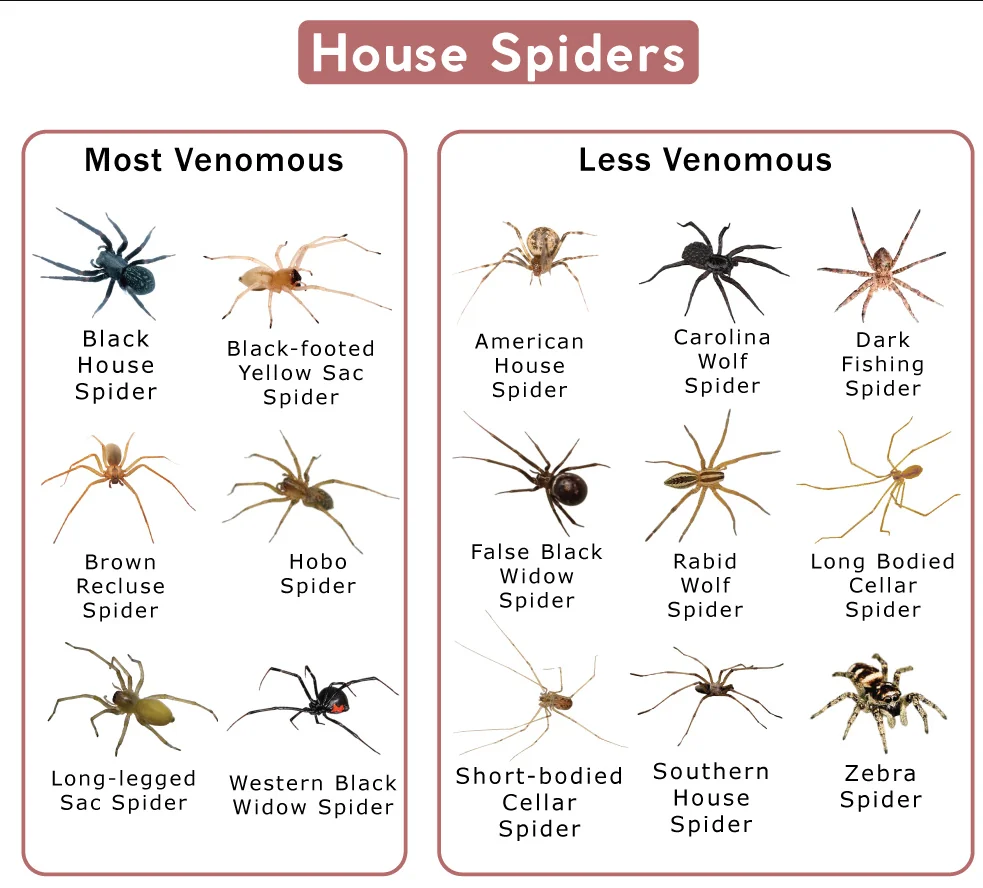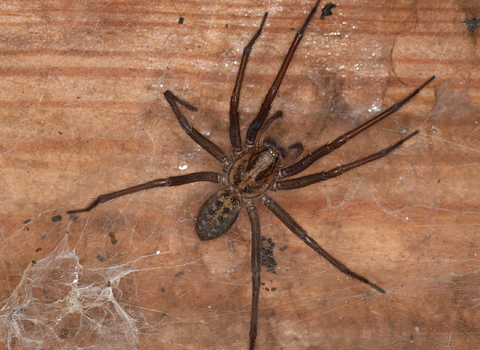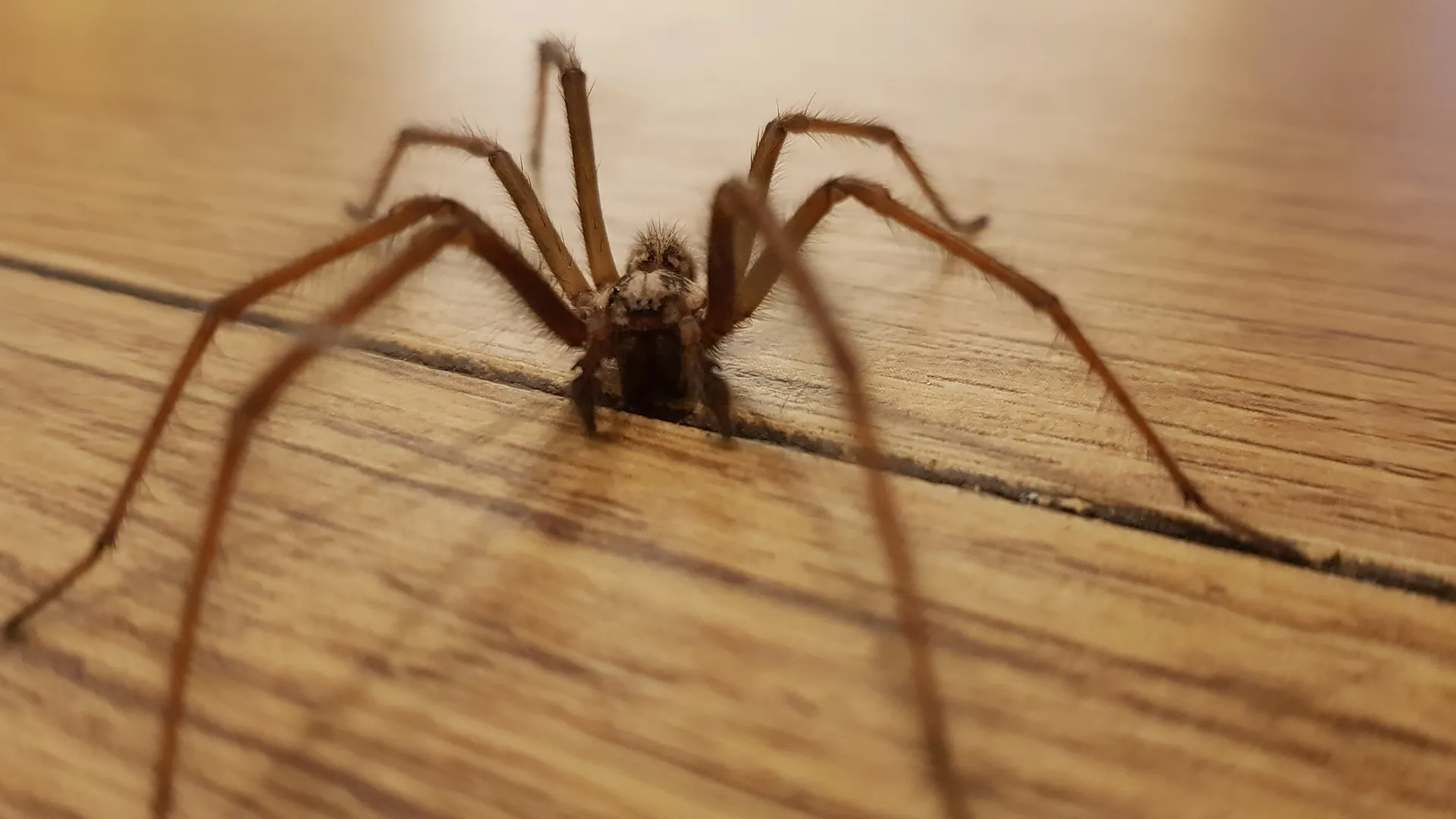Florida’s subtropical climate—featuring high humidity, abundant warmth, and mild winters—provides the perfect setting for a variety of spiders to flourish year-round. While these arachnids help control insect populations outdoors, encountering too many inside your home or workplace can be unsettling. Certain species, such as widow spiders, may pose health risks if bitten. In locations such as Lehigh Acres—where residential growth meets agriculture or semi-rural lands—spiders can multiply quickly when left unchecked. This service page explores why spiders excel in Florida’s environment, the red flags signaling an infestation, and why consulting a professional spider exterminator often proves the most dependable strategy for achieving a web-free, comfortable interior.
Whether you manage a single-family property in Lehigh Acres or own rentals in Immokalee or Labelle, recognizing spider activities—and taking prompt action—helps protect occupants, maintain a clean atmosphere, and avert potential dangers associated with venomous species.
Why Spiders Thrive in Florida
Warm, Humid Climate
In colder parts of the country, harsh winters often kill off or force spiders into dormancy for extended periods. Florida’s mild winter lacks such intense cold, allowing spiders to feed and reproduce throughout the year. Indoors, air-conditioned or heated buildings also sustain stable temperatures (65–85°F), ideal for continuous spider activity and breeding cycles.
Abundant Insect Prey
Because Florida supports large insect populations—thanks to its moisture levels and year-round warmth—spiders rarely lack food. Attracted by porch lights, insects gather around windows and doorways, inadvertently luring orb weavers or house spiders to set up webs close by. Inside, small gaps or cracks can admit flies, roaches, and other bugs that sustain spider colonies behind furniture or baseboards.
Varied Habitats and Movement
From suburban landscapes in Lehigh Acres to more rural settings in Immokalee or Labelle, Florida offers spiders ample harborage options—thick shrubs, attic corners, garages, or quiet basements. Spiders also spread when people transport items like furniture, boxes, or décor. Egg sacs attached to these objects can hatch in new locations, fueling hidden spider growth if no one notices.
Mild Winter Reproduction
In states with cold winters, spider populations taper off significantly once temperatures drop below freezing. Florida’s mild cold weather does little to hinder spiders’ life cycle. Females continue laying egg sacs, which can yield dozens—sometimes hundreds—of spiderlings who quickly disperse to new corners or web-building sites.

Telltale Signs of a Spider Infestation
- Multiple Webs Indoors
- While an occasional stray web is common, discovering them repeatedly in corners, ceiling joints, or near windows can indicate a rising spider presence.
- Orb weavers typically spin large, circular webs outdoors near lights; house or cobweb spiders produce tangled webs closer to floors or dim corners inside.
- While an occasional stray web is common, discovering them repeatedly in corners, ceiling joints, or near windows can indicate a rising spider presence.
- Egg Sacs
- Small, ball- or disc-shaped sacs that can appear on webs, behind furniture, or attached to walls.
- Each sac may release dozens or more spiderlings, potentially multiplying a minor spider issue.
- Small, ball- or disc-shaped sacs that can appear on webs, behind furniture, or attached to walls.
- Sightings of Multiple Spiders
- Seeing several spiders in various areas—especially if some appear large or aggressive—suggests they’re finding consistent food (other insects).
- Check behind boxes, along baseboards, or in bathrooms for any hush.
- Seeing several spiders in various areas—especially if some appear large or aggressive—suggests they’re finding consistent food (other insects).
- Insect Remains in Webs
- If you repeatedly spot shells of insects like flies or roaches caught in webs inside your rooms, a spider colony is actively feeding.
- Webs with numerous husks typically indicate a stable spider population that’s comfortable hunting there.
- If you repeatedly spot shells of insects like flies or roaches caught in webs inside your rooms, a spider colony is actively feeding.
- Musty or Unused Spaces
- Garages, sheds, attics, or rarely visited rooms can accumulate webs quickly if left undisturbed.
- Spiders exploit shadows, clutter, or stacked items to anchor webs without occupant disruption.
- Garages, sheds, attics, or rarely visited rooms can accumulate webs quickly if left undisturbed.
- Potential Bites
- Spiders generally avoid human contact but may bite if trapped against skin. Venomous species (like widows) can cause severe pain, muscle cramps, or other complications, stressing the importance of early detection.
- Spiders generally avoid human contact but may bite if trapped against skin. Venomous species (like widows) can cause severe pain, muscle cramps, or other complications, stressing the importance of early detection.
Risks of Ignoring Spiders
Potential Bites and Medical Concerns
While most Florida spiders aren’t deadly, a bite from certain species—like widow spiders—can require medical care. Allowing a growing spider presence indoors increases the odds of accidental contact, especially for curious children or pets.
Proliferation and Egg Hatchings
Spiders lay egg sacs that hatch into multiple spiderlings. If these sacs remain undiscovered, new spider generations spread swiftly to set up webs in adjacent areas. A small number of spiders can morph into a considerable infestation if ignored.
Unclean Appearances
Excess webs in corners or across doorways collect dust and debris, affecting a property’s neatness. For businesses, an overt spider population can hamper customer impressions; for homes, it may feel uncomfortable or neglected.
Overlapping Insect Issues
A large spider presence may hint at an abundant insect population fueling them. Allowing that insect issue to linger can encourage more spiders to settle. Addressing only the spiders but not the underlying insect supply yields short-lived success.
Occupant Discomfort
Many people have strong aversions to spiders (arachnophobia). Consistent web sightings or discovering egg sacs can cause anxiety, undermining an otherwise calm living or working environment.
Why a Professional Spider Exterminator Is Essential
Expert Property Inspection
A spider exterminator thoroughly checks attics, crawl spaces, and behind large furniture for webs, sacs, or insect prey. Identifying which species you’re confronting—house spiders, orb weavers, or more dangerous widow varieties—shapes targeted solutions, from vacuuming and chemical applications to occupant steps for removing insects.
Targeted Chemical Treatments
DIY sprays may not reach hidden spots where spiders nest or may push spiders deeper into walls. Professionals place regulated insecticides in corners, cracks, or overhead eaves, limiting occupant exposure while achieving lethal outcomes for spiders. This approach also addresses insect prey if occupant habits complement insect control measures.
Physical Web and Egg Sac Removal
Vacuuming away webs and egg sacs disrupts spider reproduction immediately. Exterminators handle these removals safely, ensuring hidden spiderlings aren’t simply relocated. Fewer places to spin webs and deposit eggs translates to fewer future spiders.
Addressing Underlying Insects
Spiders stay where prey is ample. Exterminators often provide or recommend solutions for roaches, flies, or other pests fueling spider populations. By depleting spiders’ food supply, occupant synergy ensures spiders relocate or die off once their meals vanish.
Ongoing Assurance
Some spider eggs may hatch weeks later if no treatment affects them. Many exterminators encourage re-checks, eliminating newly emerged spiderlings before they produce more webs. Occupants can also adopt prevention tips—like switching to yellow outdoor lights and sealing cracks—to discourage re-infestations.

Typical Methods for Spider Treatments
- Inspection and Identification
- Professionals scan ceilings, corners, or behind furniture for webs, egg sacs, or insect prey sources.
- Confirming which spider species is present shapes whether local crack-and-crevice treatments or more robust insect control are needed.
- Professionals scan ceilings, corners, or behind furniture for webs, egg sacs, or insect prey sources.
- Web and Egg Sac Removal
- Immediate vacuuming or physical cleanup of webs and sacs diminishes active spiders.
- This approach hastens occupant relief, slashing the breeding potential from existing sacs.
- Immediate vacuuming or physical cleanup of webs and sacs diminishes active spiders.
- Residual Insecticides or Dusts
- Placing insecticides in cracks, along baseboards, or near eaves kills spiders resting or laying eggs.
- Dust formulations in attic corners or wall voids maintain lasting deterrence against re-webbing.
- Placing insecticides in cracks, along baseboards, or near eaves kills spiders resting or laying eggs.
- Insect Reduction
- Implementing roach or ant control ensures spiders lose consistent meals.
- Occupant sanitation—like sealed garbage, wiping down counters—further reduces insect attractions.
- Implementing roach or ant control ensures spiders lose consistent meals.
- Indoor Steam or Vacuum
- Some exterminators may use high-heat steam to kill spiders and eggs on contact in upholstery or curtains.
- Thorough vacuuming of floors and corners post-treatment picks up remaining stragglers.
- Some exterminators may use high-heat steam to kill spiders and eggs on contact in upholstery or curtains.
- Exclusion Tactics
- Technicians might seal window gaps, fix door sweeps, or patch screens, blocking spider (and insect) entry.
- Exterior lighting adjustments (like bug lights) reduce insect swarms, thereby cutting spider food sources.
- Technicians might seal window gaps, fix door sweeps, or patch screens, blocking spider (and insect) entry.
- Follow-Up Inspection
- Newly hatched spiderlings can appear weeks after initial removal.
- Re-checks or occupant sightings guide if extra spot treatments are required for total elimination.
- Newly hatched spiderlings can appear weeks after initial removal.
Service Areas: Lehigh Acres, Immokalee, Labelle
Spiders adapt well to both rural farmland and bustling residential hubs. This page concentrates on Lehigh Acres, a fast-growing region in southwestern Florida. Our spider exterminator solutions also cover:
- Immokalee: Agricultural zones plus worker housing can inadvertently harbor abundant insects, attracting orb weavers, house spiders, or other species.
- Labelle: Merging older homes with newer builds, each vulnerable to spider migrations if occupant vigilance lapses—especially near shady yards or interior damp spots.
Florida’s mild winter climate fosters spider breeding year-round, fueling repeated web-building if occupant or professional actions aren’t swift. Early occupant detection and specialized extermination keep them at bay, ensuring your living or working spaces remain free of webs and egg sacs.
Why Choose Us
Florida-Savvy Approach
We tailor spider treatments to southwestern Florida’s environment, balancing occupant safety with robust results. Understanding local insect populations plus occupant habits helps us devise a synergy—integrated spider removal plus occupant-driven insect control—that reduces the chance of re-infestations.
Detailed Inspection
Our technicians examine window corners, attic beams, behind large appliances, or rarely used storage. Locating webs, egg sacs, or underlying insects shapes how we apply insecticides or vacuuming tactics. Precise targeting ensures occupant comfort with minimal chemical usage.
Effective, Targeted Products
We use regulated insecticides, applied in crevices or overhead eaves where spiders rest or spin webs. This strategy spares broad-surface chemical exposure. Physical web removal or vacuuming handles immediate spider presence, while residual treatments kill returning or newly hatched individuals.
Preventative Guidance
After clearing webs, we teach property owners in Lehigh Acres, Immokalee, or Labelle to reduce insect attractants—like sealing cracks or changing outside light bulbs—that hamper spider hunting grounds. By tying occupant actions with professional solutions, we create an enduring spider defense.
Ongoing Monitoring
Spider egg sacs may hatch post-treatment, releasing spiderlings into corners or behind furniture. Our re-checks confirm whether any newly appeared webs persist, adjusting the plan if occupant sightings continue—ensuring complete resolution in southwestern Florida’s climate.

Next Steps
Seeing webs in high corners, discovering egg sacs behind furniture, or worried about venomous spiders lurking in dim areas? Contact us to learn more or schedule your service. Our spider treatments and exterminator expertise in Lehigh Acres, Immokalee, and Labelle include meticulous inspections, integrated insecticides or dusts, plus occupant-friendly tips—restoring a comfortable, web-free space that discourages future spider incursions.
Swift action stops large-scale webbing, potential bites, and occupant anxiety linked to hidden arachnids. Rely on our Florida-focused knowledge of spider habitats and breeding cycles, ensuring your home or business remains uninviting to spiders all year in Florida’s mild winter and warm conditions.
Maintaining a Spider-Free Environment
After professional spider removal, consistent occupant measures prevent their return:
- Regular Web Removal
- Routinely scan corners, under eaves, or behind décor for new webs.
- Use a vacuum wand or broom extension to dislodge them before spiders settle.
- Routinely scan corners, under eaves, or behind décor for new webs.
- Limit Outdoor Lighting
- Bright white bulbs attract night-flying insects, which lure spiders. Switching to yellow “bug lights” or repositioning fixtures away from doorways reduces insect draws—and spider hunts.
- Bright white bulbs attract night-flying insects, which lure spiders. Switching to yellow “bug lights” or repositioning fixtures away from doorways reduces insect draws—and spider hunts.
- Trim Vegetation
- Overgrown shrubs or tree limbs touching walls give spiders a direct route indoors.
- Keep branches, vines, or thick mulches away from windows, eaves, or entrances.
- Overgrown shrubs or tree limbs touching walls give spiders a direct route indoors.
- Manage Insects
- Combat roaches, ants, or mosquitoes that feed spider populations.
- Empty standing water and store trash securely to block insect breeding.
- Combat roaches, ants, or mosquitoes that feed spider populations.
- Seal Entry Points
- Caulk cracks in siding or around utility lines, patch window screens, and upgrade door sweeps.
- Fewer easy openings discourage spiders (and insects) from invading.
- Caulk cracks in siding or around utility lines, patch window screens, and upgrade door sweeps.
- Organize Storage
- Spiders hide in cluttered garages, attic corners, or stacked boxes. Keeping items in clear bins and removing unused junk exposes webs earlier.
- Spiders hide in cluttered garages, attic corners, or stacked boxes. Keeping items in clear bins and removing unused junk exposes webs earlier.
- Monitor Post-Treatment
- If new webs appear repeatedly in the same spot, investigate possible insect sources or re-check for missed egg sacs.
- Contact an exterminator if occupant sightings persist, preventing small problems from escalating.
- If new webs appear repeatedly in the same spot, investigate possible insect sources or re-check for missed egg sacs.
By pairing occupant diligence—focusing on lighting, sealing, and insect reduction—with professional spider treatments, owners in Lehigh Acres, Immokalee, and Labelle can prevent these eight-legged pests from overrunning spaces. While Florida’s mild climate may give spiders ample breeding opportunities, thorough housekeeping and quick professional intervention ensure they find no long-term foothold in your home or business.
